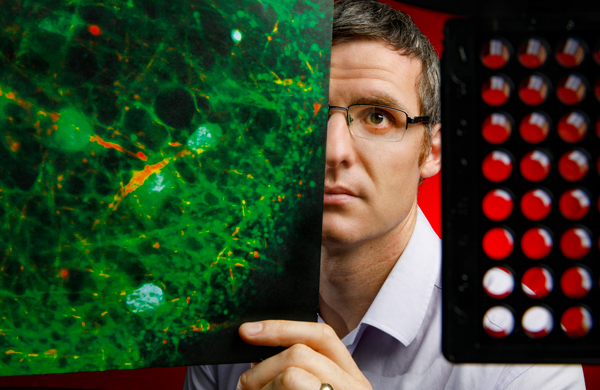Studying the brain in miniature

When John Finan was in college, one of his friends suffered a traumatic brain injury in a motorcycle accident. The experience had a profound impact on Finan, motivating him to research these injuries through the lens of mechanical engineering.
“I started out trying to design a better motorcycle helmet,” Finan said, recalling his initial focus on injury prevention. But over time, his interests shifted to using the principles of biology and engineering to help recovering patients.
Finan and colleagues from Northwestern University received a National Institutes of Health grant to apply stem-cell research to traumatic brain injury treatment. Stem-cell approaches have made great strides: stem cells now can be made from common cells, such as skin or blood cells, and turned into otherwise hard-toget heart or brain cells. Scientists also figured out how to make stem cells into organoids, three- dimensional cell cultures that can replicate the functioning of human organs in miniature scale.
Still, there are challenges. Stem cells are not flat, for example, which presents issues under a microscope. As Finan puts it, “we have a brand-new frontier in neuroscience but no toolbox.”
So, Finan, an assistant professor in mechanical and industrial engineering, is working with his partners to develop one. One of their most exciting contributions is a small electrode-lined basket that can hold agglomerations of brain cells. Researchers can use the tiny basket to conduct exams on these cell balls: the micro equivalent of doing an EEG by using a special electrode-lined cap to detect a person’s brain activity.
“We’re recreating that on a sub-millimeter scale,” Finan said.
For more on this research, read the full story.